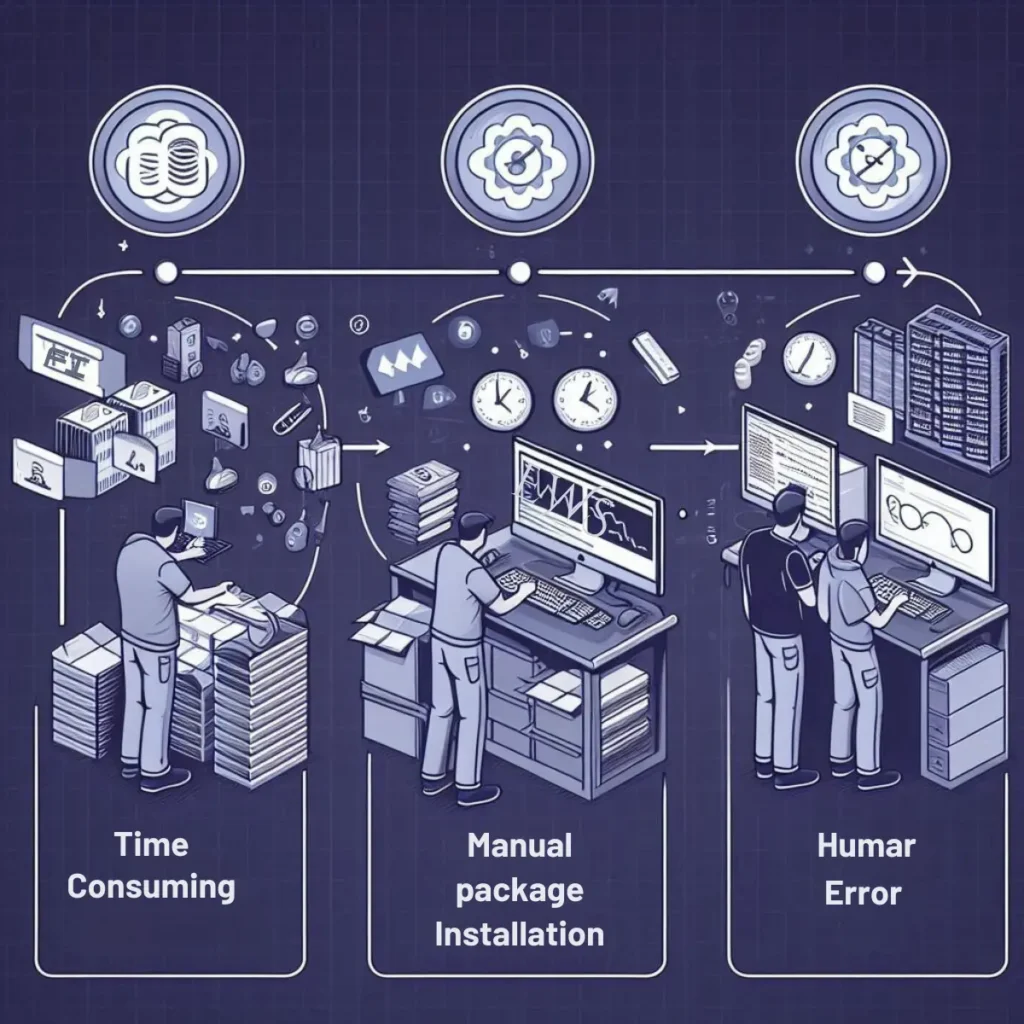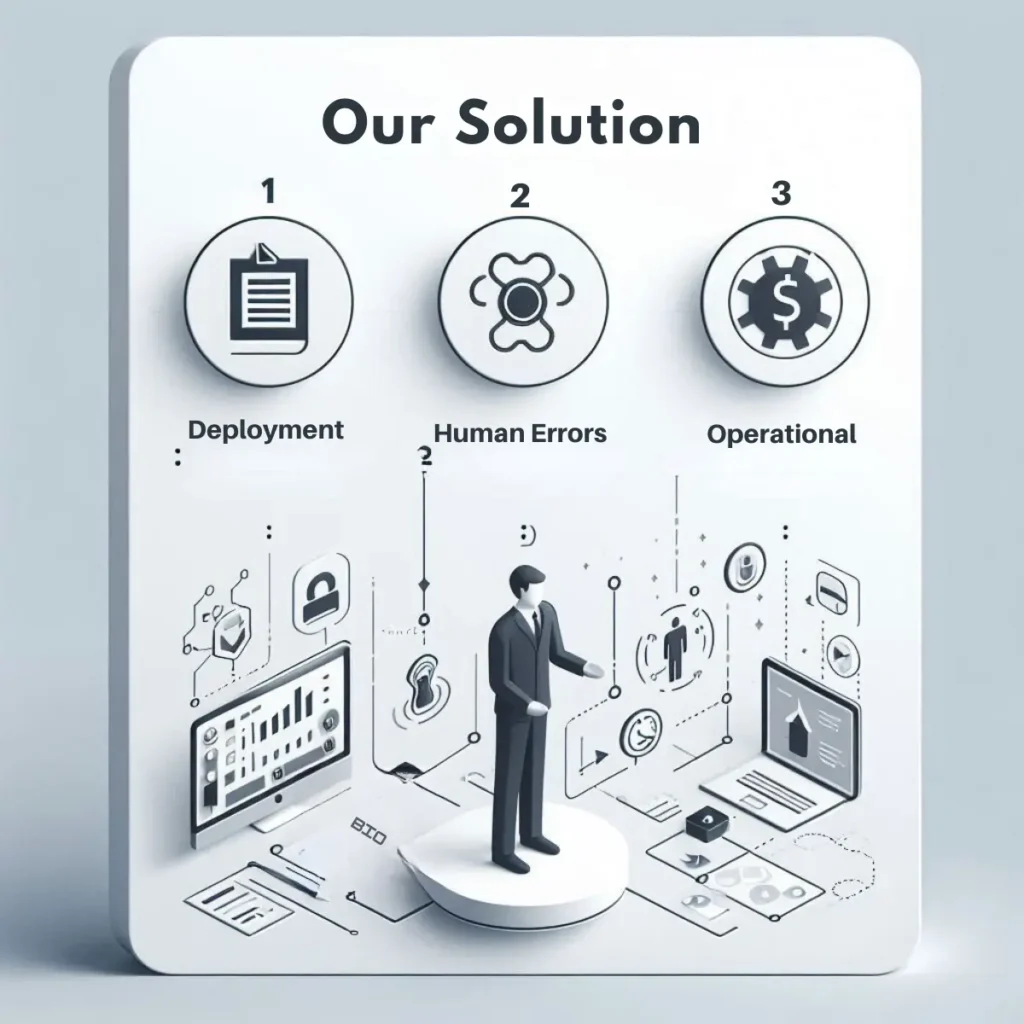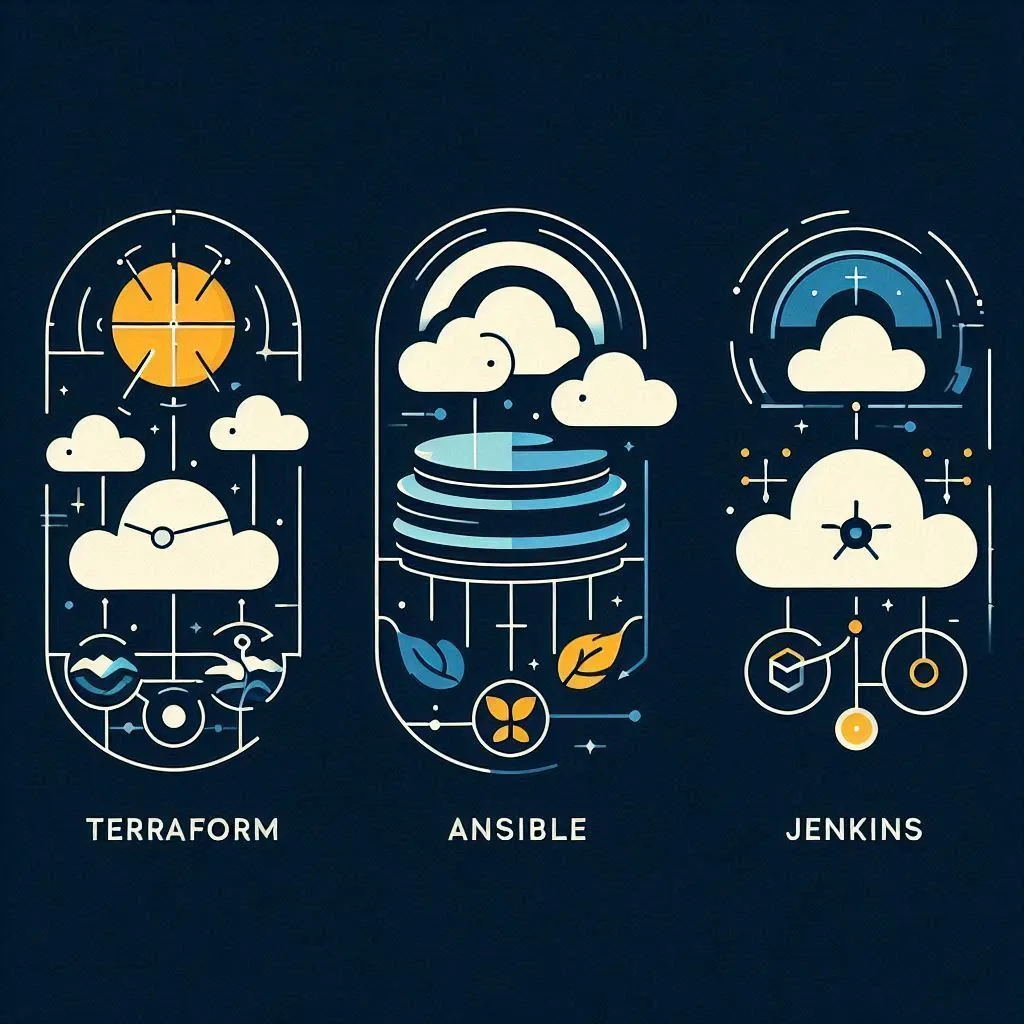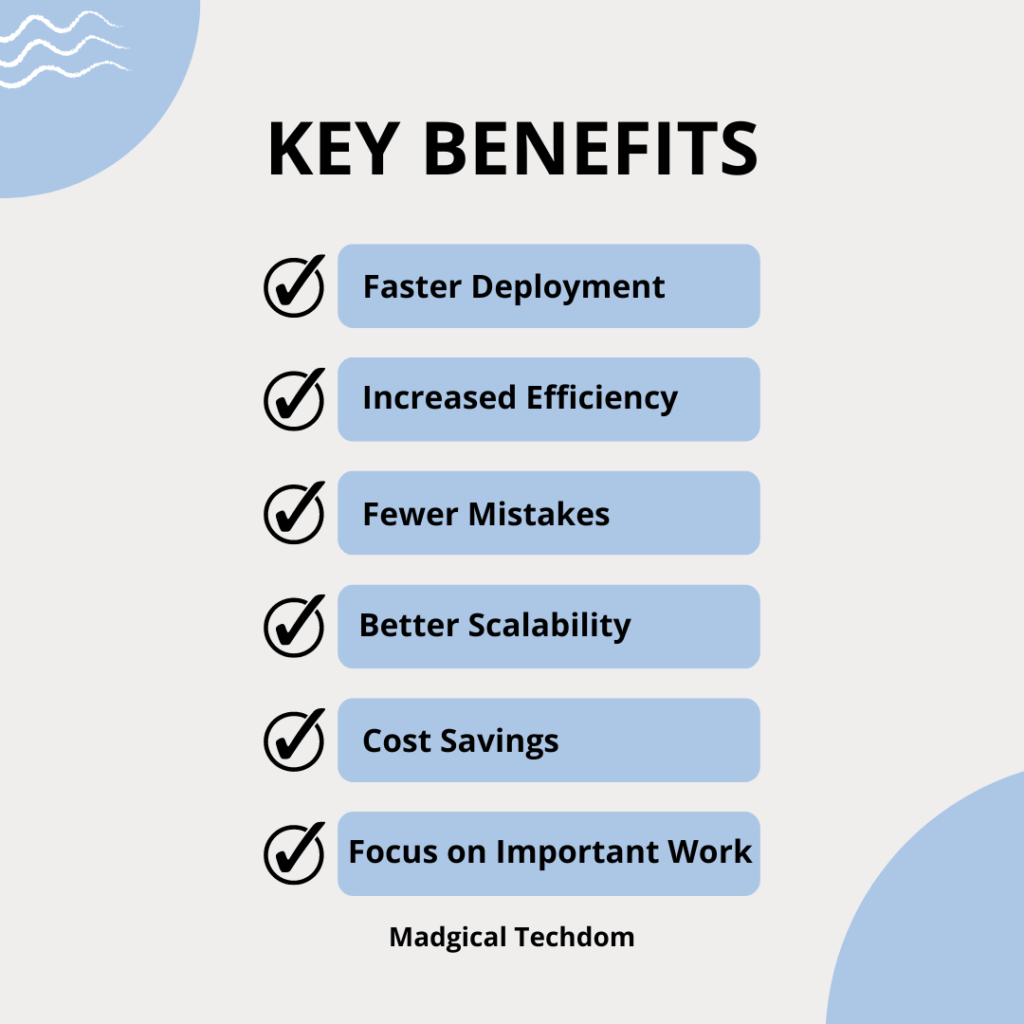How CI/CD Cut Costs & Time for a Leading Chatbot Company?

Introduction
At our company, we’re all about making automation easy and effective for our clients, helping them become more efficient and scalable. With deep expertise in infrastructure as code, configuration management, and CI/CD pipeline automation, which means we know how to streamline operations and cut down deployment times. Recently, we partnered with Chatbot Support Company, a company that was struggling to deploy customer support chatbots for its growing client base of over 100 companies.
Their traditional deployment approach was labor-intensive—it required multiple teams(Engineering, Infra Operations, DevOps team, Testing, Business Operations) and a lot of manual work to set up individual environments for each client. This method was not only time-consuming—taking 2-3 days per client—but it also left room for errors, making it difficult for the company to scale and meet the increasing demands of its customers. That’s when they reached out to us for a solution that would not only automate their infrastructure setup but also enhance the reliability and speed of their deployment pipeline.
To address these challenges, we implemented a comprehensive automated solution:
- Infrastructure Automation with Terraform: We used Terraform to manage everything as code, automating the creation of Azure resources and ensuring consistency and scalability across environments. Specifically, we created:
- Virtual Machines (VMs): Configured with different operating systems, sizes, and storage options.
- Resource Group: To organize and manage related Azure resources.
- Virtual Network (VNet) and Subnets: For network segmentation and isolation.
- Network Security Groups (NSGs): To control inbound and outbound traffic to the VMs.
- Public IP Addresses: To enable external access to the VMs.
- Network Interfaces: To connect the VMs to the virtual network and public IPs.
If these resources already existed, they were reused; otherwise, Terraform created them from scratch. This ensured that each client’s environment was consistent, scalable, and easily repeatable.
- Configuration Management with Ansible: Ansible helped us automate the installation and configuration of critical software across environments. We used it to manage the setup of Java, Tomcat, and MySQL, ensuring these services were consistently configured. Additionally, Ansible was used to configure system settings such as File Limits, Rsyslog, NCPA, Swap, and TCP services, reducing errors and maintaining uniformity across environments.
- Deployment Pipeline Automation with GitHub Actions and Jenkins: We combined the power of GitHub Actions and Jenkins to orchestrate the entire deployment process. GitHub Actions handled the integration and automation of the code repository, triggering workflows on code changes, while Jenkins was used to streamline the CI/CD pipeline, automating the build, test, and deployment stages. Jenkins also adjusted deployments to fit the needs of different environments, ensuring everything worked correctly for each stage.

This integrated approach significantly reduced manual intervention, enabling the deployment of environments quickly and consistently, ultimately improving the ability to scale and serve clients effectively.
In this article, we’ll dive into the challenges faced, how we leveraged Terraform, Ansible, GitHub Actions, and Jenkins to automate the deployment process, and the real-world benefits this brought to operations.
Problem Statement

In today’s fast-paced tech environment, companies are under constant pressure to deploy software quickly, efficiently, and without errors. For a client with over 100 companies relying on their customer support chatbots, the manual deployment process was a significant bottleneck. This process involved multiple teams and several steps, each prone to delays and errors, making it increasingly difficult for the company to scale and meet the demands of its expanding client base.
- Inconsistent Setups: The manual process led to differences in the client’s environment. Since there were no standard templates, each setup was slightly different, which caused problems during deployment and maintenance. Without clear standards, fixing issues and scaling the setup became more complicated and time-consuming.
- Long Setup Time: It took about 2-3 days on average to complete the setup for this client. The process involved several teams—DevOps, database admins, network engineers, and developers—all of whom needed to coordinate their work. For example, after the database team finished their part, the web team had to set up the web server. This often led to delays due to compatibility issues and configuration mismatches.
- Impact on Project Timelines: The delays in setting up the environment affected the project’s timelines. Go-live dates were pushed back, and resources were stretched thin as team members worked on multiple setups at once. This inefficiency created bottlenecks and made it hard to meet deadlines, especially during busy periods. The lack of automation also made it hard to quickly scale the setup or add new features.
- Maintenance Problems: The unique nature of each setup made ongoing maintenance difficult. Fixing issues required a lot of effort because each environment was different. This often led to longer downtimes and frustration for both the client and our team.
Our Solution

1. Dramatic Reduction in Deployment Time
How We Did It:
- Terraform Modules for Consistency: We implemented reusable Terraform modules to create standardized Azure resources like virtual networks, storage accounts, and compute instances. This allowed for the rapid provisioning of infrastructure across all environments with minimal manual intervention.
- Ansible Playbooks for Configuration Automation: We used Ansible to automate the software configuration, including the installation of dependencies like Java, MySQL, and system configurations such as network settings, file limits, and security hardening. These playbooks were executed across all environments simultaneously, eliminating the need for manual installation on each server.
- Pipeline Automation with GitHub Actions and Jenkins: Jenkins automated the testing, building, and deployment phases, while GitHub Actions was configured to automatically trigger this process upon code commits. This ensured that infrastructure provisioning and software configuration were fully automated from the start of the commit process.
Impact:
- Terraform: Reduced time spent on environment setup by 85% by enabling infrastructure creation in minutes instead of hours.
- Ansible: Minimized the risk of misconfigurations by 90%, as the same playbooks were used across all environments, ensuring consistency.
CI/CD Pipeline: Reduced deployment time from 2-3 days to under 30 minutes by orchestrating the entire process, from testing code changes to provisioning infrastructure and applying configurations, all without manual intervention.
2. Reduction in Human Errors
How We Did It: By automating manual steps with Terraform and Ansible, we removed the potential for human errors in infrastructure setup and software configuration. Ansible’s playbooks ensured consistent configurations across environments, while Terraform provided a reliable infrastructure foundation.
Impact: The rate of human errors in deployments decreased by 95%, from an error rate of 70% due to manual processes to less than 5%. This reduction saved approximately 8 hours per deployment that would have otherwise been spent on error correction and troubleshooting, significantly improving deployment reliability and efficiency.
3. Cost Savings in Operational Expenses
How We Did It: The transition to an automated pipeline involved implementing Terraform for infrastructure management, Ansible for configuration, and Jenkins along with GitHub Actions for continuous integration and deployment. This automation cut down the need for multiple teams and manual interventions.
Impact: Operational costs were reduced by 40%, translating into substantial savings on labor and resource usage. By automating routine tasks, 30% of the workforce was reallocated from deployment tasks to higher-value activities, leading to further innovations and growth within the company. This efficiency boost also minimized costly errors and optimized resource utilization.
Implementation
To modernize the deployment process, we implemented a solution combining Terraform for infrastructure management and a CI/CD pipeline setup. Below is an overview of how these components were integrated:

1. Terraform Infrastructure Setup
We used Terraform to automate the creation and management of infrastructure. The configuration for provisioning Azure resources was stored in a dedicated repository. The key elements included:
- Infrastructure as Code (IaC): Terraform modules were defined to standardize the provisioning of resources like virtual networks and storage accounts.
- State Management: Remote state management was configured to maintain consistency and track changes across deployments.
2. Ansible Configuration Management
Ansible was employed to automate the installation and configuration of software and system settings. This included:
- Software Installation: Automated setup of Java, Tomcat, and MySQL.
- System Configuration: Configured system settings such as File Limit, Rsyslog, NCPA, Swap, and TCP services.
3. CI/CD Pipeline Setup
The CI/CD pipeline was established in a separate repository to handle the integration and deployment processes. The pipeline used GitHub Actions and Jenkins for automation. Key components included:
- Continuous Integration (CI): GitHub Actions automated the testing and validation of code changes.
- Continuous Deployment (CD): Jenkins orchestrated the deployment process, utilizing Terraform for infrastructure and Ansible for configuration.
If you’re looking to implement a similar solution or need assistance with your CI/CD pipeline, feel free to contact us. We’re here to help you streamline your workflow.
Benefits

By using this automated deployment pipeline, several key benefits were gained:
- Faster Deployment: The biggest improvement was speeding up the deployment process from 2-3 days to just 15-20 minutes. This allowed the company to deliver solutions to their clients much faster, which made a big difference in customer satisfaction.
- Increased Efficiency: Automation made the deployment process smoother and more efficient. It reduced the need for multiple teams and cut down on extra work, making everything run more smoothly.
- Fewer Mistakes: Automating repetitive tasks helped avoid human errors, making deployments more reliable and consistent. This reduced the need to fix mistakes and saved time.
- Better Scalability: The new system made it easy to handle more clients as the business grew. It ensured that every client got the same high-quality service, even as the number of clients increased.
- Cost Savings: By cutting down on manual work, 40% of the costs on both staff and resources were saved. The streamlined process led to significant reductions in operational expenses.
- More Focus on Important Work: With routine tasks automated, the team could spend more time on important projects and innovations. This allowed them to focus on activities that added more value to their business.
Overall, the automated solution made the deployment process faster, more reliable, and cost-effective, helping them grow and serve their clients better.
Conclusion

In conclusion, implementing a deployment pipeline using Terraform, Ansible, and Jenkins revolutionized the chatbot deployment process. The company experienced a 90% reduction in deployment time, cutting it down from 2-3 days to just 15-20 minutes. This speed boost enabled faster delivery of solutions and significantly increased customer satisfaction.
Efficiency saw a dramatic improvement as well, with automation reducing the need for multiple teams and eliminating redundant tasks. This led to a 40% reduction in operational costs, allowing resources to be reallocated more effectively.
Moreover, the reliability of deployments soared, with fewer human errors and consistent outcomes across environments. This not only saved time but also enhanced the scalability of the system, making it easier to handle their growing client base while maintaining high-quality service.
Overall, the integration of Terraform, Ansible, and Jenkins didn’t just streamline DevOps workflow—it empowered the company to scale, save costs, and deliver better services, faster. The benefits were clear: faster deployments, increased efficiency, and significant cost savings, all contributing to growth and success in a competitive market.
Thank you for Reading !! 🙌🏻😁📃, see you in the next blog.🤘
I hope this article proves beneficial to you. In the case of any doubts or suggestions, feel free to mention them in the comment section below or Contact Us.
The end ✌🏻
References
- Jenkins: Jenkins Official Website
- Ansible: Ansible Official Website
- Terraform: Terraform Official Website
- Cloud Cost Optimization: The Ultimate Guide to Cut Expenses
- Why companies turning to a Fractional CTO for growth?
- GitLab Runner Setup: Deploying on AWS EC2 Made Easy
- How to Use GitLab Container Registry in Amazon EKS?